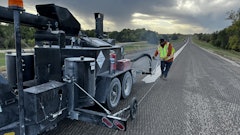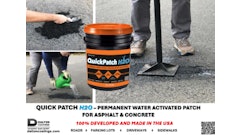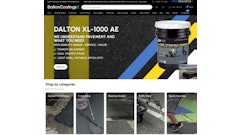
According to sealer manufacturers, the largest group of contractors they sell to is the contractors who drive to a distributor, pick up a load of sealer, go do a job or two, and then repeat the process as needed.
These contractors pay the highest per-gallon price simply because they are not buying sealer in bulk, so it’s especially important they minimize their number of trips to a supplier, minimize the time they spend there, and maximize each visit.
Locations, Locations, Locations
First, according to several manufacturers, contractors should learn all supplier locations – plant and storefront – in the area they work. “It might be more convenient to pick up sealer from a storefront instead of the plant,” says Jeff Luzar, vice president of sales at Guardtop. “You might have future jobs that are closer to a location you don’t typically use, so it can pay to know where they all are.”
Tony Heffernan, regional vice president, Neyra Industries, says it’s these pick-up contractors in particular who need to evaluate how far they are from their supplier and how far jobs are from their supplier. “If they’re in a hard-to-reach location, say four hours from a supplier, they probably should consider a tank in their yard because they can’t afford to be driving four hours each way to pick up sealer,” Heffernan says.
Bill Maclean, at The Brewer Company, says that not only should contractors know all the different locations they can pick up sealer, they should know what those locations stock. “You can buy more than just sealer at many of our distributor locations so it’s important to know what kind of inventory they have,” Maclean says. “It could save you a trip back to your yard or to another location.”
What’s your Schedule...and your Supplier’s?
Next make sure to know the hours of operation at each location. “Then plan your pick-ups during those hours,” Luzar says. “You’re better off picking up sealer in the afternoon for the next day than waiting until the next morning when we’ll probably have a line of contractors waiting.”
“Help us out by trying to work within the store hours,” says Bob Krebs, owner of SealMaster franchises in North and South Carolina. “Of course there are times when that can’t happen and we understand that and we’ll work with contractors as best we can.”
And Lee Lowis, vice president at GemSeal, says that if you do have to pick up material just before closing, call ahead and place your order in advance. “They will appreciate your thoughtfulness,” Lowis says. ”And when you do arrive, do your best to help speed up the process.”
Scheduling your pick-ups will help get you in and out more quickly too. “Call and ask us what the peak times are at a particular location and work around those times,” Krebs says. “Also, try to plan in advance. If you’re going to be working on Saturday, pick up that sealer on Friday. Many suppliers have limited hours on the weekend or no hours at all and the last thing you want to do is sit in line waiting instead of working.”
Planning the Pick-up
Suppliers say that one of the most-common problems they face from contractors picking up sealer is that they often don’t know what they want to buy. Heffernan says that often the owner/operator is picking up material himself, but he doesn’t know what the mix design should be, the cut rate, the amount of sand or the additive.
“We can help figure all that out but that takes time and slows down the process for him and for everyone,” Heffernan says. “But if you know exactly the product you want to buy and the mix design you need for that particular product we can get in and get out quicker. They’re not making any money picking up sealer.”
Lowis says it’s important to be clear when ordering material. Most suppliers carry multiple types of sealer, additives, crack fillers, striping paints, etc. so be specific about what you want.
“Know what you want or know that you do not know what you want,” Lowis says. “When you arrive at the plant try to give them your complete order. If you have questions on what to use, clearly explain the results you are looking for. If you are not sure how much sealer you need, tell them so that they know how to serve you best.”
Lowis says it’s not uncommon for suppliers to see over-dilution or under-dilution because the contractor didn’t know how much sealer was left in the tank. “They either add too much sealer and do not leave room for enough water, or they put in too little sealer and fill the tank with water,” he says.
Krebs says they will not add more water than the maximum their lab specifies. “This may create a little heartburn with a few contractors, but we want everyone to be confident that the material was mixed correctly at our plant or stores,” Krebs says. “This will give you and your customer the sealer’s best performance.”
An even bigger problem, Heffernan says, is the contractor that sends its crew in to pick up product. “They’re either going to end up with the wrong material or they’ll buy things they don’t have to buy,” he says.
“Planning is more for their benefit than ours,” Maclean says. “If they send crews that are self-directed they can chew up a lot of time picking up sealer. So make sure they know what they’re coming in to buy. The more specifics you can give a crew when sending them in on their own, the more efficient it’s going to be getting them out and back on the job.”
Lowis recommends providing any crew member picking up material with a written list of what he’s to buy – or better yet, call the plant and give them the order.
Heffernan says if a contractor doesn’t know or specify the mix design, most manufacturers will give them material exactly to the manufacturer’s specification for whatever product they’re buying. “The downfall with that is that at different times of year you might want to be altering that mix design,” Heffernan says. “In the middle of summer, for example, you might need 2% more water to help the sealer because the air and pavement is so hot. But we can’t put that extra 2% in unless they ask for it.”
And When You’re at the Plant...
If you do encounter a line waiting to fill up at a supplier, manufacturers say, “be patient.”
“Our job is to help you by getting you in and back out onto your jobsite as quickly as possible. But there are limitations,” Krebs says. “We can’t have five different ports manned by five different employees to handle five contractors needing sealer. So if you get there and have to wait in line, be patient. We want to get you through as quickly as we can.”
Here’s where planning ahead, learning store hours and calling about peak times really come into play. “Just call ahead,” Heffernan says. “Find the right time because you don’t want to come in to pick up when there are four guys in line ahead of you.”
If you have several questions and need help, set up a time in advance. “That way they do not feel rushed to help other customers and can focus on you,” Lowis says.
And if you are in line, don’t leave your vehicle. If it’s your turn to move up and you’re not there, you not only delay yourself but everyone in line behind you.
On the other hand, Maclean says, when in line have some consideration for others. “If you’ve got a number of people in line and you’ve gotten your material and water, pull out of the way so other people can move up to load,” he says.
“If you plan ahead we can all be successful,” Krebs says.








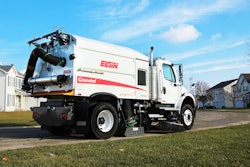

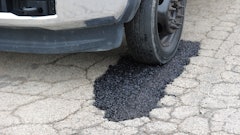

![Lee Boy Facility 2025 17 Use[16]](https://img.forconstructionpros.com/mindful/acbm/workspaces/default/uploads/2025/09/leeboy-facility-2025-17-use16.AbONDzEzbV.jpg?ar=16%3A9&auto=format%2Ccompress&fit=crop&h=135&q=70&w=240)

